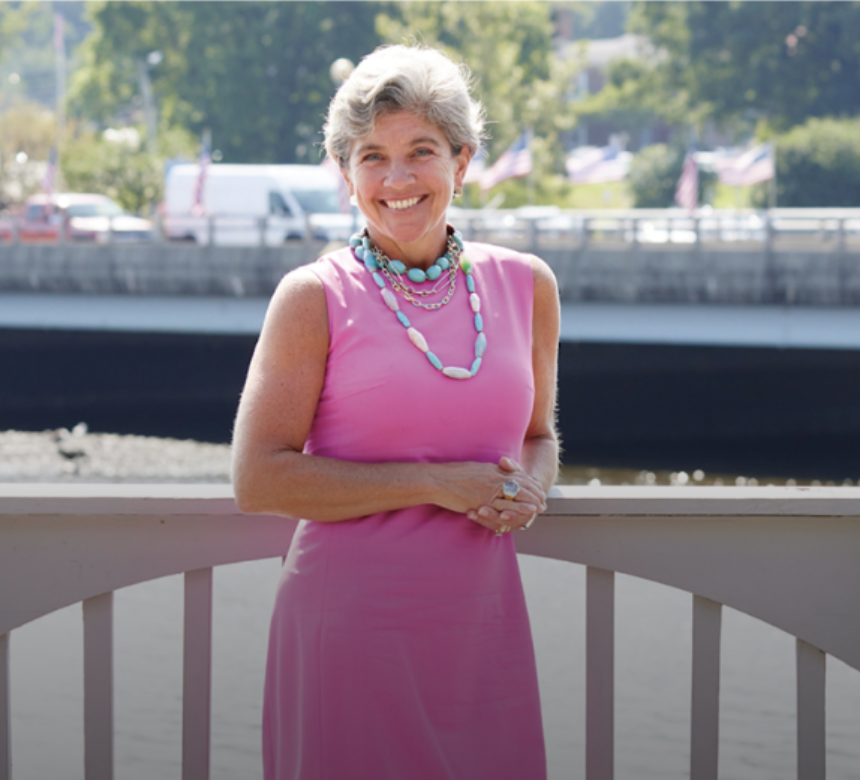![picresized_th_1292856165_UCONN_Teachers_Lucy_Sinclair_good[1]](https://www.inklingsnews.com/wp-content/uploads/2010/12/picresized_th_1292856165_UCONN_Teachers_Lucy_Sinclair_good1-199x300.jpg)
Michelle Maher is a graduate student at at the University of Connecticut who is working to get her master’s degree in education. As a requirement for the course, Maher was required to teach high school level students for four months.
Maher taught Introduction to Psychology and U.S. History and government, two social studies courses normally taught by teachers Carol Avery and Jonathon Shepro. Fulfilling the roles of Avery and Shepro gave Maher a realistic understanding of a teacher’s responsibilities.
Avery and Shepro are certified advisors for student teachers. Their role in the process was to watch over Maher, checking in on her classes from time to time and guiding her in regards to the curriculum.
“My philosophy is that it’s important that she creates the lesson plans herself,” Shepro said. Avery agrees, saying that in order to get the full teaching experience Maher had to be as independent as possible.
Maher said that her time at Staples was a positive learning experience. “Most of my classes were very well behaved,” Maher said. “[The students] were intelligent and they knew how to challenge themselves.”
Erica Titlebaum ’11, a student in Maher’s Psychology class, said working with a student teacher, as opposed to a normal teacher, was a unique experience. “It’s different because although she was younger and more understanding, the workload was definitely harder,” Titlebaum said. Although Titlebaum said the rigor of the course was equivalent to that of a normal teacher’s workload, she described the reading and homework assignments to be much more challenging.
In a previous year, Jason Davis ’11 worked with a student teacher. When Davis was a sophomore, a graduate student from Fairfield University instructed his class.
For Davis, the experience of working with a student teacher was not a positive one. “Because of her inexperience, she had no control over the class,” Davis said. “When she lost control, she just yelled or sent us in to the hallway for a time out. Middle school stuff.”
Davis said that due to the teacher’s lack of self-control, his classmates would often rebel against the student teacher.
“When she said to do work, we didn’t do it. When she said don’t talk, we talked.” Davis further explained how having this relationship with the teacher made it difficult for Davis and his classmates to succeed in the subject. Ultimately, he was thankful when his teacher, Liz Olbrych, returned.
Marco Romero ’12 said his experience with his student teacher differed from that of Davis. Last year, Romero spent four months of Geometry with Tanya Kaplan, a Graduate student at Sacred Heart.
Romero says that having a student teacher was different from having a normal teacher because he sympathized with her. “She was friendlier and she understood the students more. She knew what was going on and how we had other work,” Romero said. According to Romero, this made learning from a college aged student favorable for him and his peers.
Although working with Kaplan was successful, Romero says some of his peers were consistently disruptive and excessively talked in class. “We really viewed her more as a friend than a teacher,” Romero said.
Aside from a few drawbacks, Romero thinks that having this relationship with Kaplan definitely enhanced his understanding of the subject. “Overall, being able to work with a student teacher was an experience that I was fortunate to have taken part of,” Romero said.
Avery and Shepro believe that allowing student teachers to instruct high school students is constructive for both the student teacher and their students. For this reason, Shepro says maintaining an open mind is crucial when working with a student teacher. “The student’s role in the process is an important one because they can contribute to how well the college student grows into becoming a successful teacher,” Shepro said.
Shepro continued to explain how having a student teacher can be very beneficial. “It’s good for the students to see the process that an adult goes through in order to successfully work, whether it’s teaching or any other career.”













































